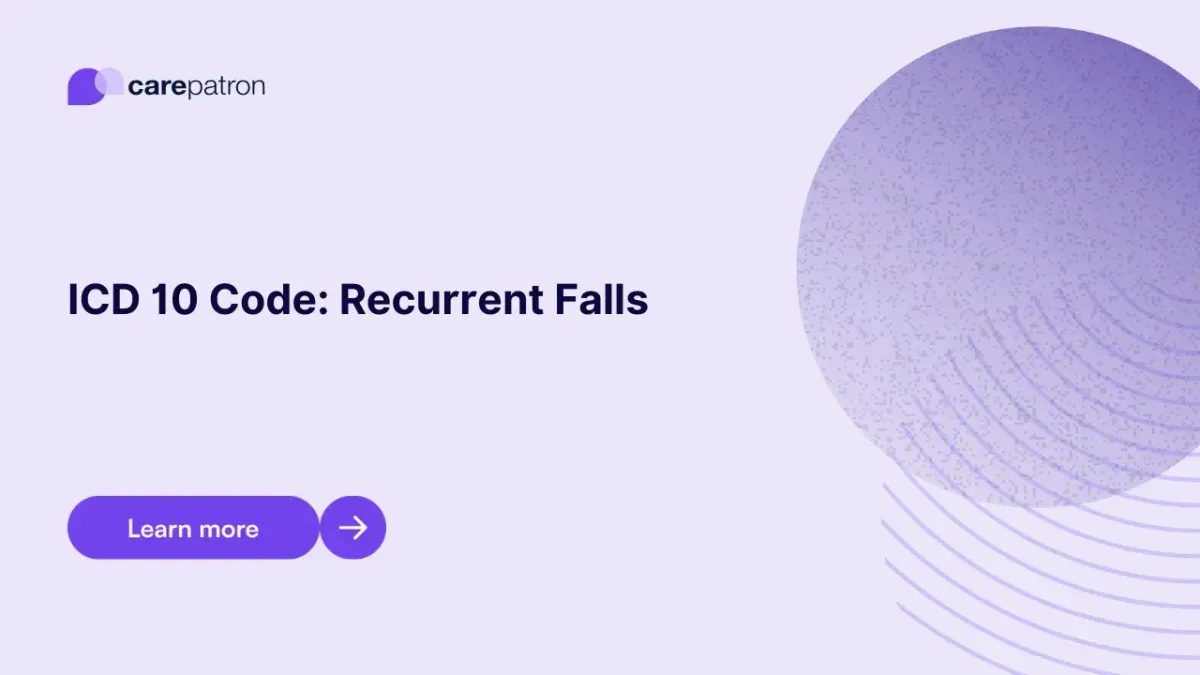
Recurrent Falls ICD-10-CM Codes
Read this short guide to learn about the recurrent falls ICD codes you can use. Explore clinical and billing information here.
Use Code
Commonly asked questions
Here are some examples of problems that can cause mobility issues, and, in turn, heighten the risk of falling for a person: Arthritis, thyroid problems, heart problems, neurological disorders like stroke and Parkinson’s Disease, sprains, and having a falling history.
Healthcare professionals can conduct balance and mobility tests, such as the 30-second Sit-to-Stand Test, to assess a person's risk of falling. They can even conduct such tests to monitor patients over time to see if there are any reductions or increases in their risk of falling.
They will develop a care plan considering their patient’s falling risk. Their plan will likely include points related to providing support so that the patient can do activities of daily living, and even physical therapy and rehabilitation to help them recover from any injuries they may have sustained because of falling.
EHR and practice management software
Get started for free
*No credit card required
Free
$0/usd
Unlimited clients
Telehealth
1GB of storage
Client portal text
Automated billing and online payments
